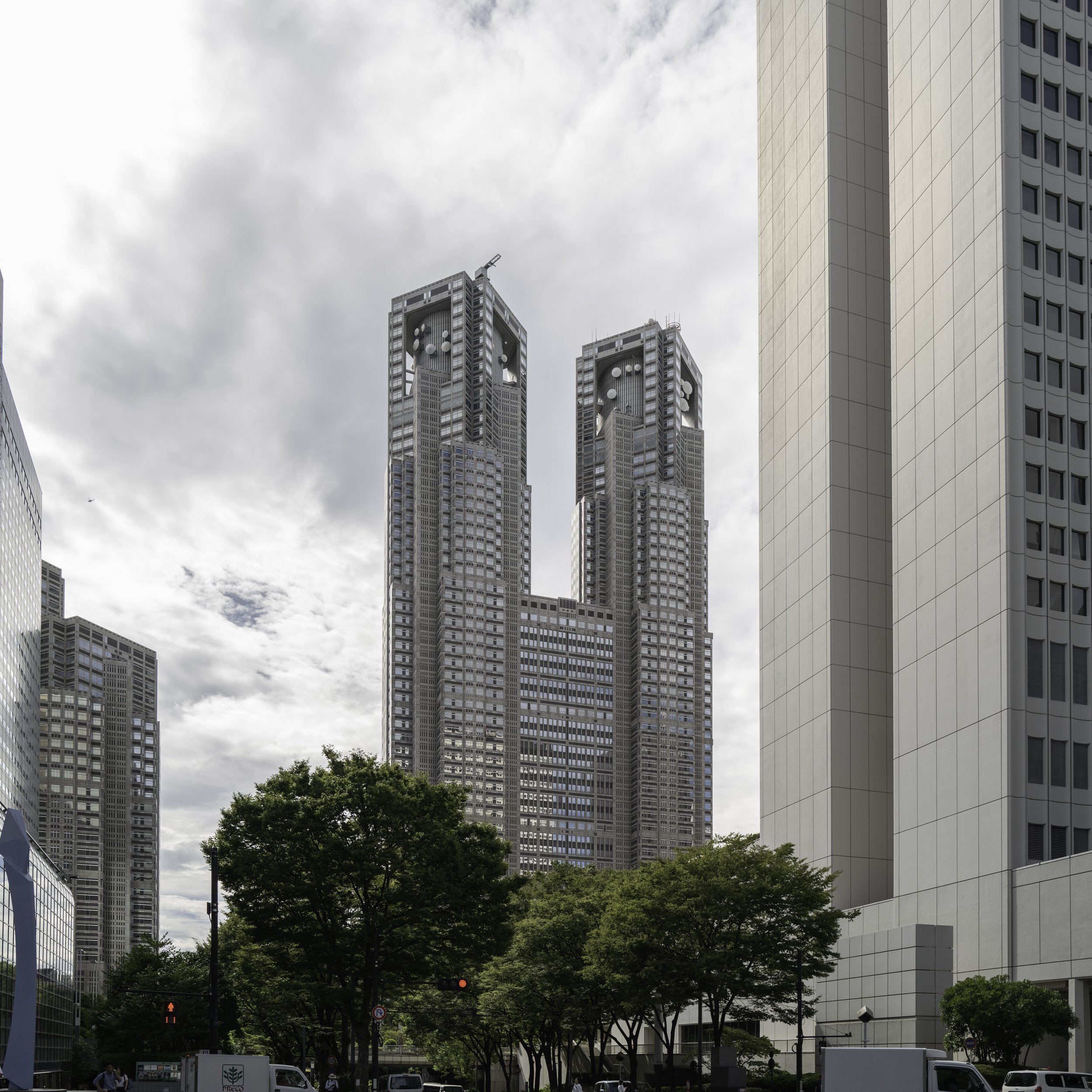The Tokyo Metropolitan Government Building: A Symbol of Modern Tokyo 🏙️✨
🔗 Useful Links
- Tokyo Metropolitan Government Building Official Website
- Information on Wikipedia
- Biography of Kenzō Tange on Wikipedia
- Architectural Details on ArchDaily
🏗️ Designed by Kenzō Tange
The Tokyo Metropolitan Government Building, also known as Tochō, is an emblematic creation of the Japanese architect Kenzō Tange. Designed twice by Tange, first in 1952 at Yūrakuchō and then in Shinjuku in 1991, the complex represents an ambitious work of the architect's late career.
🌆 An Iconic Building of Tokyo
Dominating Tokyo's skyline, the complex is a distinctive architectural work and a symbol of the modern city. Composed of three interconnected structures, the design merges tradition and modernity, reflecting Tokyo's cultural diversity.
🌟 Architecture and Design
- Building No. 1: The main structure of the complex, reaching 48 floors, was the tallest building in Tokyo at the time of its construction. Its facade in prestressed concrete is enriched with geometric patterns in light and dark granite.
- Building No. 2: Located south of No. 1, it features three interconnected towers of increasing height, with a design that exposes architectural elements and services.
- Assembly Building: An 8-story semicircular building dedicated to the meetings of the Tokyo council, with a large and tranquil courtyard.
📐 Architectural Philosophy
Tange, known for integrating tradition and modernity in his work, used geometric patterns reminiscent of traditional Japanese houses, while the twin towers evoke Gothic cathedrals.
💡 Technological References
The building incorporates imagery of computer circuits, reflecting Japan's technology-based economic growth. Tange used the metaphor of "communication spaces" connected by "information channels" to describe the movement of people within the building.
🔍 Urban Regeneration of Shinjuku
The construction of Tochō marked the beginning of Shinjuku's transformation into a modern financial district. The area, once known for its Yakuza activity, is now a thriving economic center.
🌀 The Cycle of Regeneration
Influenced by Buddhist teachings, Tange believed in the regenerative power of architecture. The demolition of his original government building and the construction of the Tochō completed a cycle of renewal, making it a key piece in Tange's portfolio that beautifully combines traditional and modern elements, functionalism, and a reflection of Japan's national identity.
Architecture


















